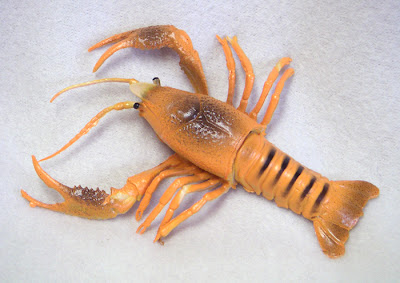Looks a little like an 8-legged ninja, don't he?
Our Mud Crab
This engaging, realistic-looking plastic mud crab has a solid body, but flexible legs. It is 2 1/2 inches across with good detail. This crab makes a nice pet, a gift or is useful for a diorama. Check out our other crab toys and gifts.
About Mud Crabs
The most common mud crab (Scylla serrata) is generally a mangrove crab but can also refer to several similar crabs found in mud throughout the world. Some mud crabs are large crabs with a smooth, broad carapace. They have 9 even sized teeth on each side of their eyes. Their two hind legs are flattened for swimming. In the most common form, the color varies from very dark brown/black to mottled green. Mud crabs inhabit sheltered estuaries, the tidal reaches of some rivers, mud flats and mangrove forests. These crabs are found scuttling along a soft, muddy bottom, often below low tide level. Some are harvested commercially especially in Australia but, for the most part, they make excellent bait for larger aggressive fish.
This blog is sponsored by Tapir and Friends Animal Store.

































